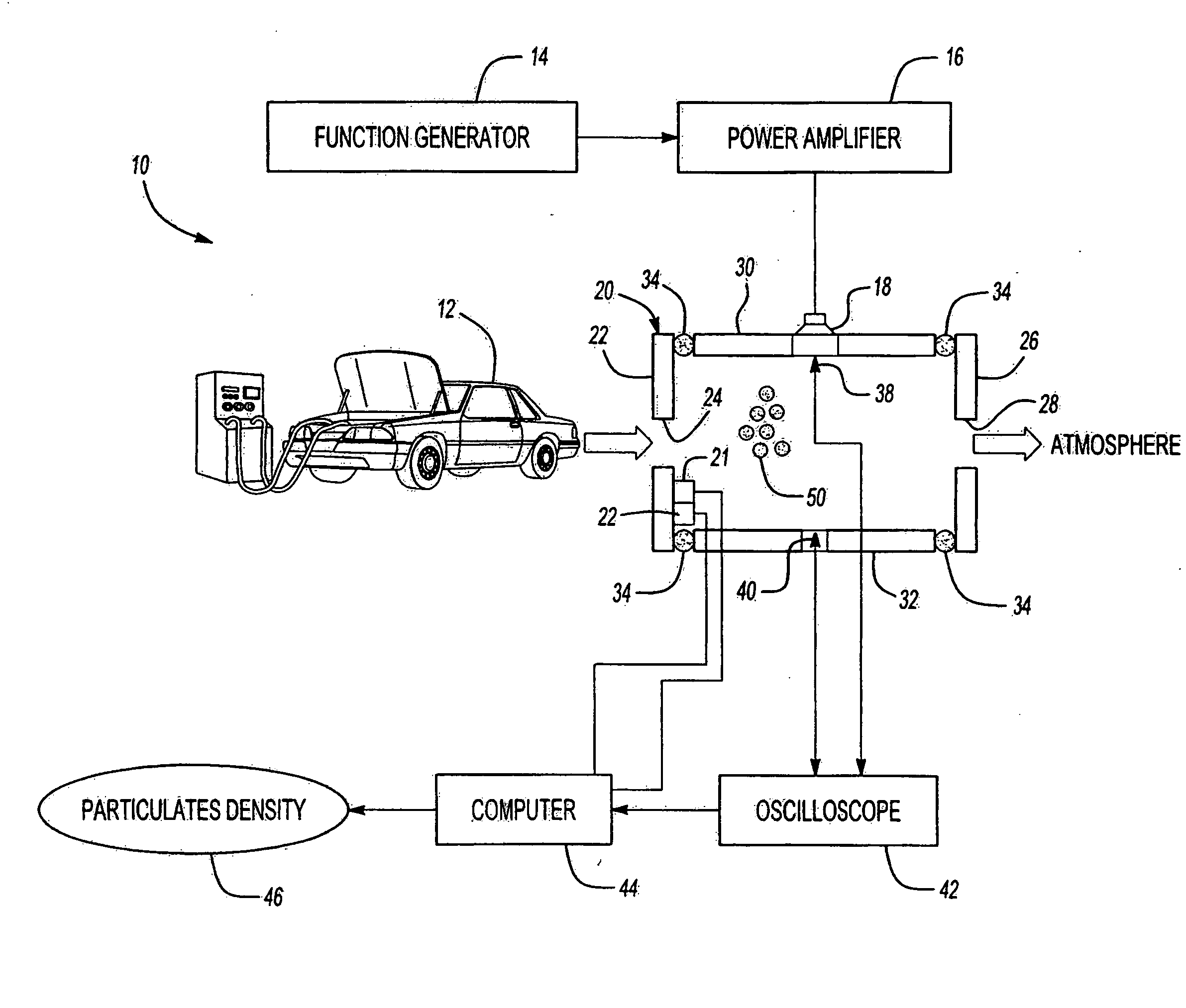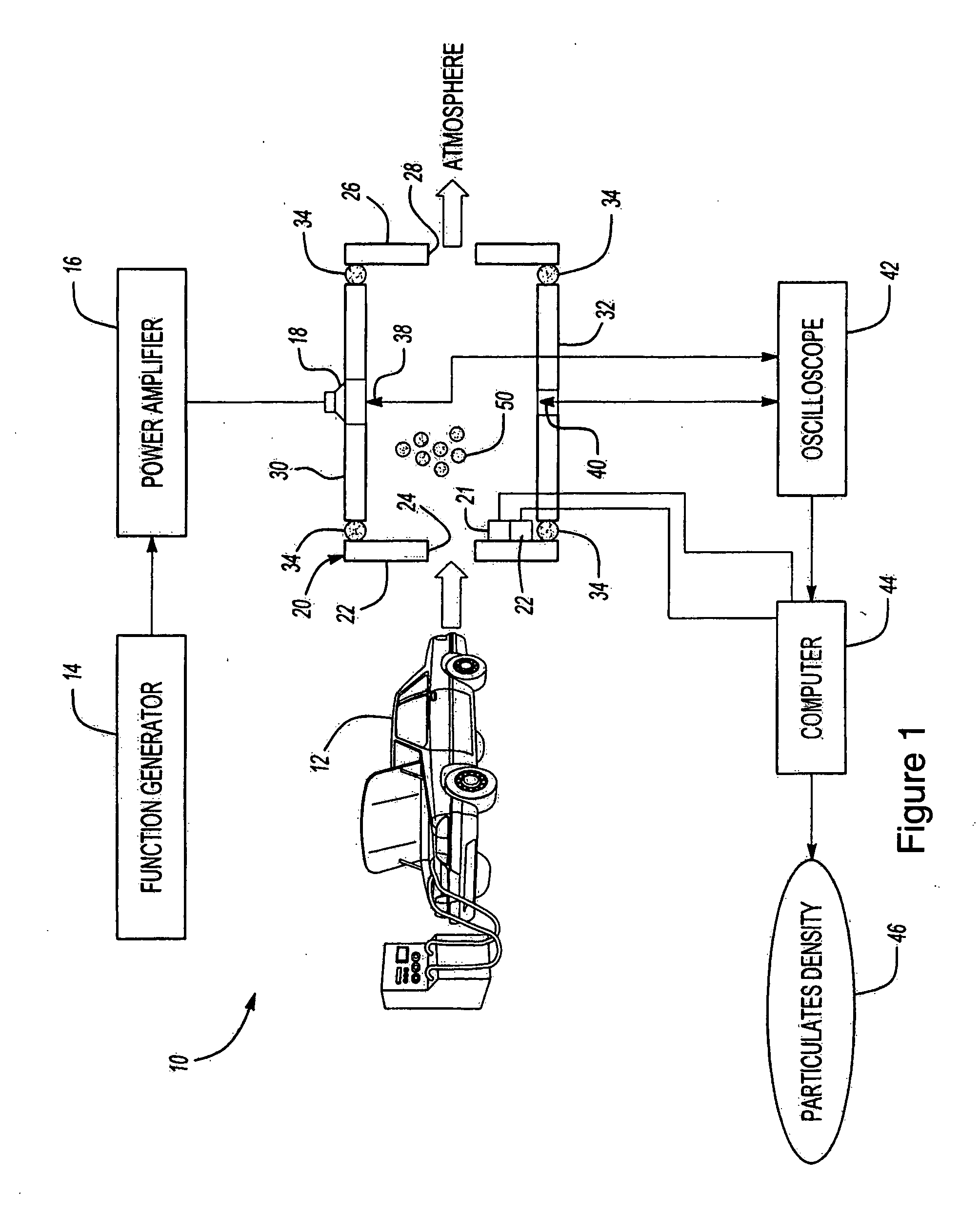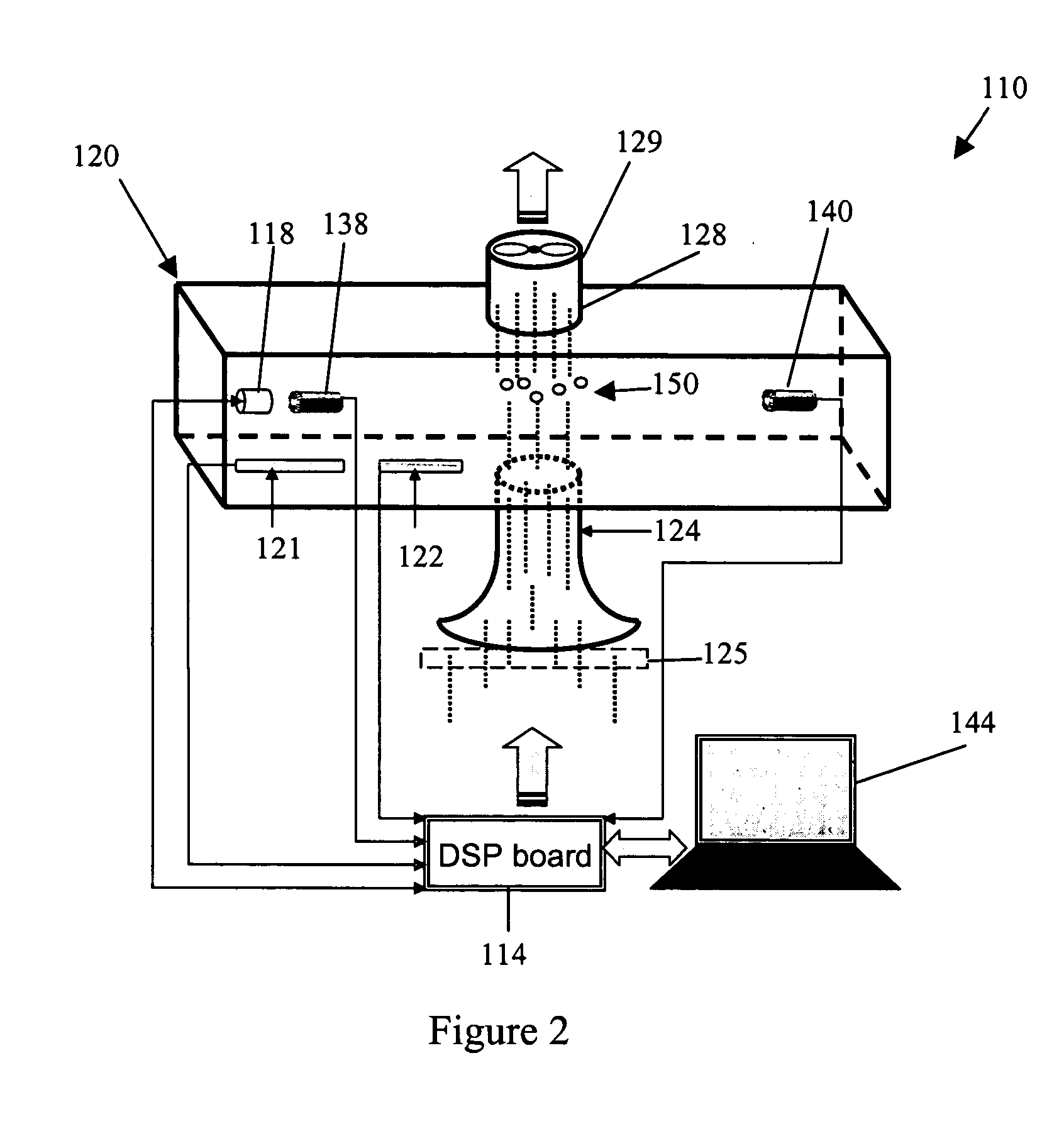Acoustic particulates density sensor
- Summary
- Abstract
- Description
- Claims
- Application Information
AI Technical Summary
Benefits of technology
Problems solved by technology
Method used
Image
Examples
Embodiment Construction
[0013]FIG. 1 schematically illustrates the acoustic particulates density sensor 10 of the present invention in one potential use in measuring the particulate density of exhaust from a vehicle 12. The sensor 10 includes a function generator 14 which sends out an impulse that is amplified by a power amplifier 16. This impulse is emitted through a loudspeaker 18 mounted over an opening on a tube 20. An exhaust system of the vehicle 12 discharges a gas mixture through the tube 20 to atmosphere. A thermometer 21 and a humidity meter 22 measure the temperature and relative humidity of the airflow inside tube 20.
[0014] The tube 20 comprises a forward wall 22 having an opening 24 for receiving the exhaust gases and an opposing rearward wall 26 having an opening 28 for discharging the exhaust gases to atmosphere. The tube 20 further includes sidewalls 30 and 32 enclosing the tube 20 and connecting forward wall 22 to rearward wall 24. Foam 34 is disposed between the sidewalls 30, 32 and the ...
PUM
 Login to View More
Login to View More Abstract
Description
Claims
Application Information
 Login to View More
Login to View More - R&D Engineer
- R&D Manager
- IP Professional
- Industry Leading Data Capabilities
- Powerful AI technology
- Patent DNA Extraction
Browse by: Latest US Patents, China's latest patents, Technical Efficacy Thesaurus, Application Domain, Technology Topic, Popular Technical Reports.
© 2024 PatSnap. All rights reserved.Legal|Privacy policy|Modern Slavery Act Transparency Statement|Sitemap|About US| Contact US: help@patsnap.com










